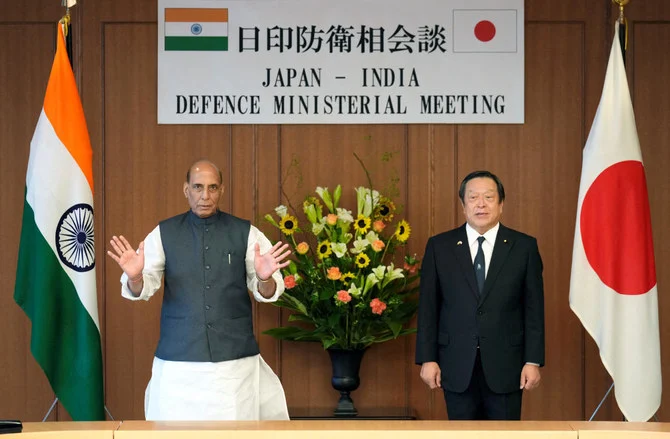
India and Japan said on Thursday they would deepen defense cooperation, with New Delhi inviting investment by Japanese industries and both countries planning a joint military drill involving their air force fighters.
India’s Defense Minister Rajnath Singh held talks in Tokyo with his Japanese counterpart Yasukazu Hamada, and both will join their respective foreign ministers later in the day for “two-plus-two” talks.
“He invited Japanese industries to invest in India’s defense corridors,” India’s defense ministry said in a statement, referring to Singh.
“The two ministers agreed that the early conduct of the inaugural fighter exercise will pave the way for much greater cooperation and inter-operability between the air forces of the two countries.”
India, like Japan, is bolstering its military to tackle what it sees as increased security threats, including from neighboring China.
In Japan, Prime Minister Fumio Kishida has promised a “substantial” defense spending increase. His ruling Liberal Democratic Party wants to double Japan’s military budget to 2 percent of gross domestic product over the next five years amid worry Russia’s invasion of Ukraine could embolden China to act against neighboring Taiwan.
Delhi, which last week commissioned its first home-built aircraft carrier, is expanding its security ties with Tokyo as both Asian nations grow wary of China’s growing military might in the region.
The two countries, along with Australia and the United States are members of the Quad group of nations and hold annual naval exercises across the Indo-Pacific to demonstrate inter-operability.
The last leaders gathering in May in Japan was dominated by discussion about Taiwan after US President Joe Biden angered China a day earlier by saying he would be willing to use force to defend the democratic island. As they met, Russian and Chinese warplanes conducted a joint patrol in the region.
Kishida and India’s Prime Minister Narendra Modi in a separate bilateral meeting agreed to work closely together to promote a “free and open Indo-Pacific.”





















